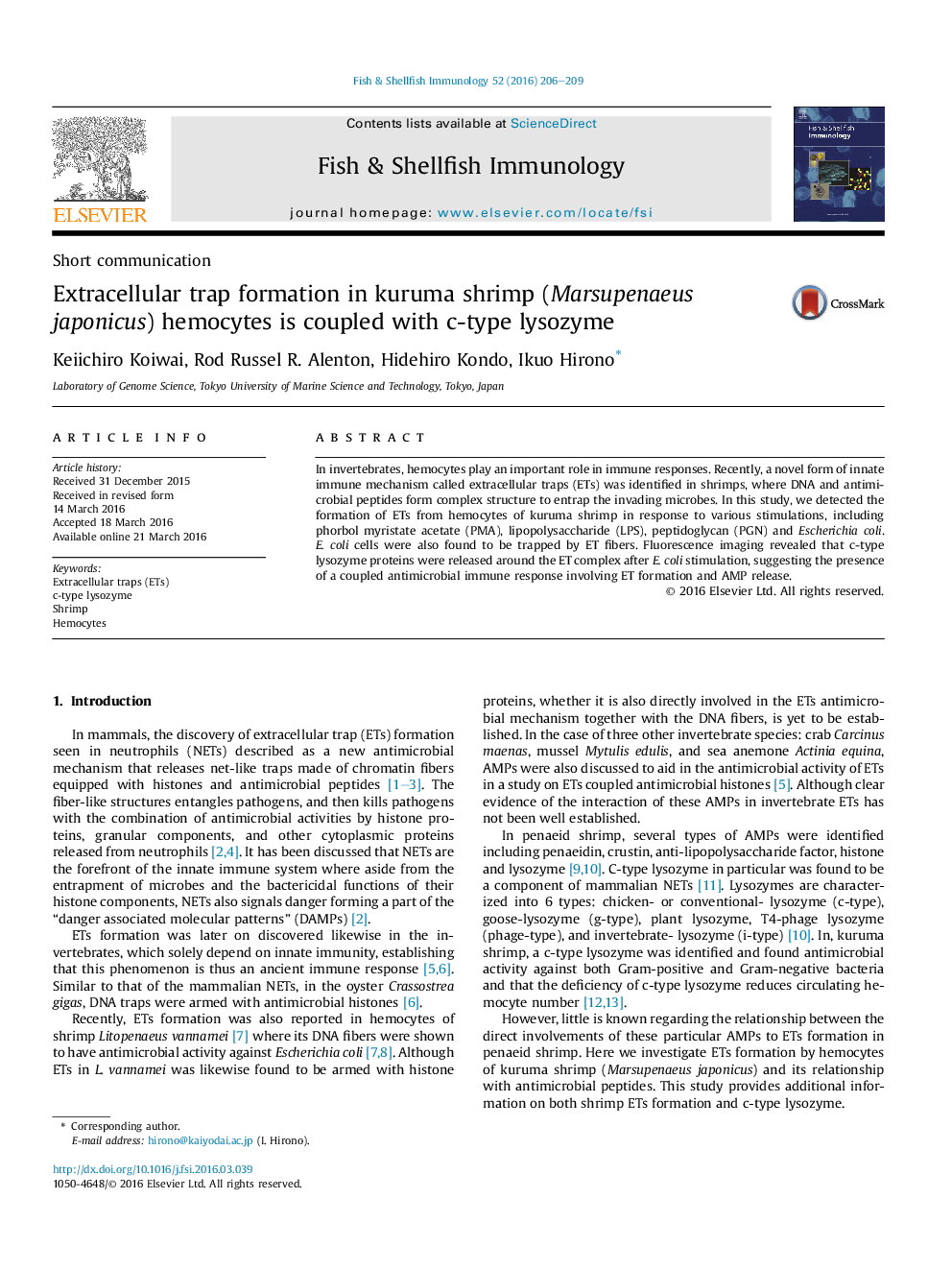| Article ID | Journal | Published Year | Pages | File Type |
|---|---|---|---|---|
| 2430877 | Fish & Shellfish Immunology | 2016 | 4 Pages |
•Formation of extracellular traps (ETs) was observed in hemocytes of Marsupenaeus japonicus.•ETs were formed in response to peptidoglycan, together with previously reported ETs stimulants.•C-type lysozyme was co-located on both DNA of ETs and cytoplasm of hemocytes that didn't form ETs.
In invertebrates, hemocytes play an important role in immune responses. Recently, a novel form of innate immune mechanism called extracellular traps (ETs) was identified in shrimps, where DNA and antimicrobial peptides form complex structure to entrap the invading microbes. In this study, we detected the formation of ETs from hemocytes of kuruma shrimp in response to various stimulations, including phorbol myristate acetate (PMA), lipopolysaccharide (LPS), peptidoglycan (PGN) and Escherichia coli. E. coli cells were also found to be trapped by ET fibers. Fluorescence imaging revealed that c-type lysozyme proteins were released around the ET complex after E. coli stimulation, suggesting the presence of a coupled antimicrobial immune response involving ET formation and AMP release.
